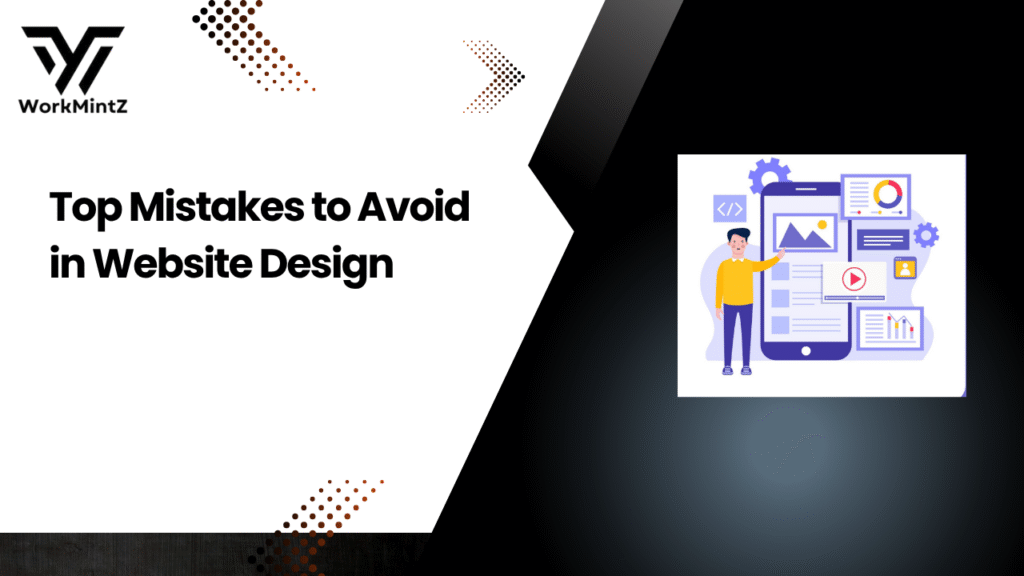Introduction: Avoiding Critical Website Design Mistakes in 2025
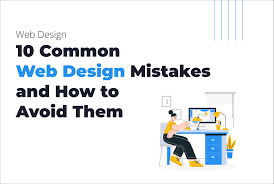
In today’s competitive digital landscape, your website isn’t just a business card — it’s your most powerful branding and conversion tool. But even in 2025, many businesses fall into the trap of outdated, unoptimized, and confusing web design practices. A poor website experience can drive away potential customers before they even read your message. At Workmintz, we believe that understanding the most common pitfalls can help businesses craft seamless, engaging, and conversion-focused websites.
One of the major issues is neglecting Responsive Web Design Best Practices, which leads to unappealing mobile interfaces. Similarly, website speed optimization mistakes can result in slow load times — a surefire way to lose user interest. Poor structure and user experience design errors like broken menus or bad UX examples can leave visitors frustrated. Then there are annoying web design features like auto-play videos and overwhelming website pop-up mistakes, which severely disrupt the browsing experience.
Another huge mistake is a missing CTA web design — every page should guide users toward a clear action, supported by website CTA best practices. Many also overlook accessible web design and ADA compliance, excluding potential customers. Inconsistent branding, poor font choices, and web design typography mistakes affect the brand consistency of your site. Let’s not forget SEO web design mistakes that harm your visibility and website design image mistakes that lead to poor visual content web design. Lastly, users value safety, so skipping website trust elements and secure website design practices damages credibility.
In this comprehensive guide, Workmintz will walk you through the top website design mistakes to avoid in 2025 — so you can build trust, boost engagement, and increase conversions the smart way.
1. Ignoring Mobile Responsiveness :-
In 2025, ignoring mobile responsiveness is no longer just a design oversight—it’s a business-killing mistake. With over 70% of internet traffic now coming from smartphones and tablets, users expect seamless, mobile-friendly experiences. Failing to implement Responsive Web Design Best Practices can result in poor usability, misaligned content, distorted images, and frustrated users who bounce within seconds. At Workmintz, we’ve seen that brands who optimize for mobile not only retain users longer but also increase conversions dramatically.
Responsive web design ensures your site layout adjusts automatically across various screen sizes—from smartphones to tablets to desktops—providing a smooth and consistent experience. Websites that ignore this are not just behind the times; they are damaging their brand reputation and SEO. Google prioritizes mobile-first indexing, meaning your site’s mobile performance directly affects its ranking.
A non-responsive website leads to more user complaints, lower engagement, and higher bounce rates. Whether it’s buttons that are too small to tap or content that’s cut off, these issues add up quickly. Following Responsive Web Design Best Practices includes flexible grids, scalable images, mobile-friendly fonts, and easy navigation menus.
At Workmintz, we always design with a mobile-first approach because mobile responsiveness isn’t a feature anymore—it’s the foundation. Avoid this critical mistake to stay competitive in 2025 and beyond.
2. Slow Website Load Speed

In the fast-paced digital world of 2025, users won’t wait more than a few seconds for your website to load. A sluggish website is one of the most damaging website speed optimization mistakes businesses can make. Studies show that even a 1-second delay in page load time can reduce conversions by 7%. At Workmintz, we’ve seen high-performing websites lose potential leads and customers simply because their pages took too long to load.
Speed isn’t just about convenience—it’s a ranking factor. Google penalizes slow-loading websites, pushing them down in search results. That means if your competitors have faster sites, they’ll appear above you in Google—even if your content is better. From an SEO perspective, slow speed equals poor visibility.
Common website speed optimization mistakes include using uncompressed images, bloated code, excessive use of third-party scripts, and not leveraging browser caching or content delivery networks (CDNs). These technical issues are easily fixable, but many brands overlook them.
A fast-loading website improves user experience, increases time on site, and boosts your conversion rate. At Workmintz, we audit and optimize each site for speed, ensuring minimal load times without sacrificing design or functionality.
Don’t let poor speed sink your digital presence. Make performance a top priority.
3. Cluttered Layout and Poor Navigation
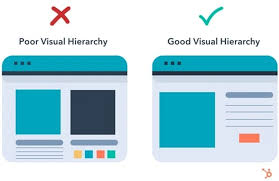
A cluttered layout and confusing navigation are among the most common user experience design errors that frustrate visitors and drive them away. In 2025, with users expecting smooth, intuitive digital journeys, poorly structured websites can ruin even the most visually stunning designs. At Workmintz, we often encounter businesses with great content but poor layout, which results in higher bounce rates and lost conversions.
When visitors can’t find what they’re looking for in just a few clicks, they leave. These bad UX examples include overcrowded menus, inconsistent navigation bars, and lack of clear hierarchy. A poorly planned layout forces users to guess where content lives, breaking their flow and damaging trust in your brand.
Good design is not just about aesthetics—it’s about usability. A clean layout, logical structure, and easy-to-use menu contribute to better engagement and SEO. Search engines also evaluate user behavior on your site, so bad UX can lead to lower rankings.
Workmintz specializes in transforming confusing websites into intuitive, streamlined experiences that enhance user satisfaction. By avoiding these user experience design errors, we help brands keep users engaged, moving seamlessly from point A to B—ultimately leading to more conversions and better business results.
Clarity, consistency, and simplicity should guide your website’s structure in 2025.
4. Overuse of Pop-Ups and Auto-Play Media
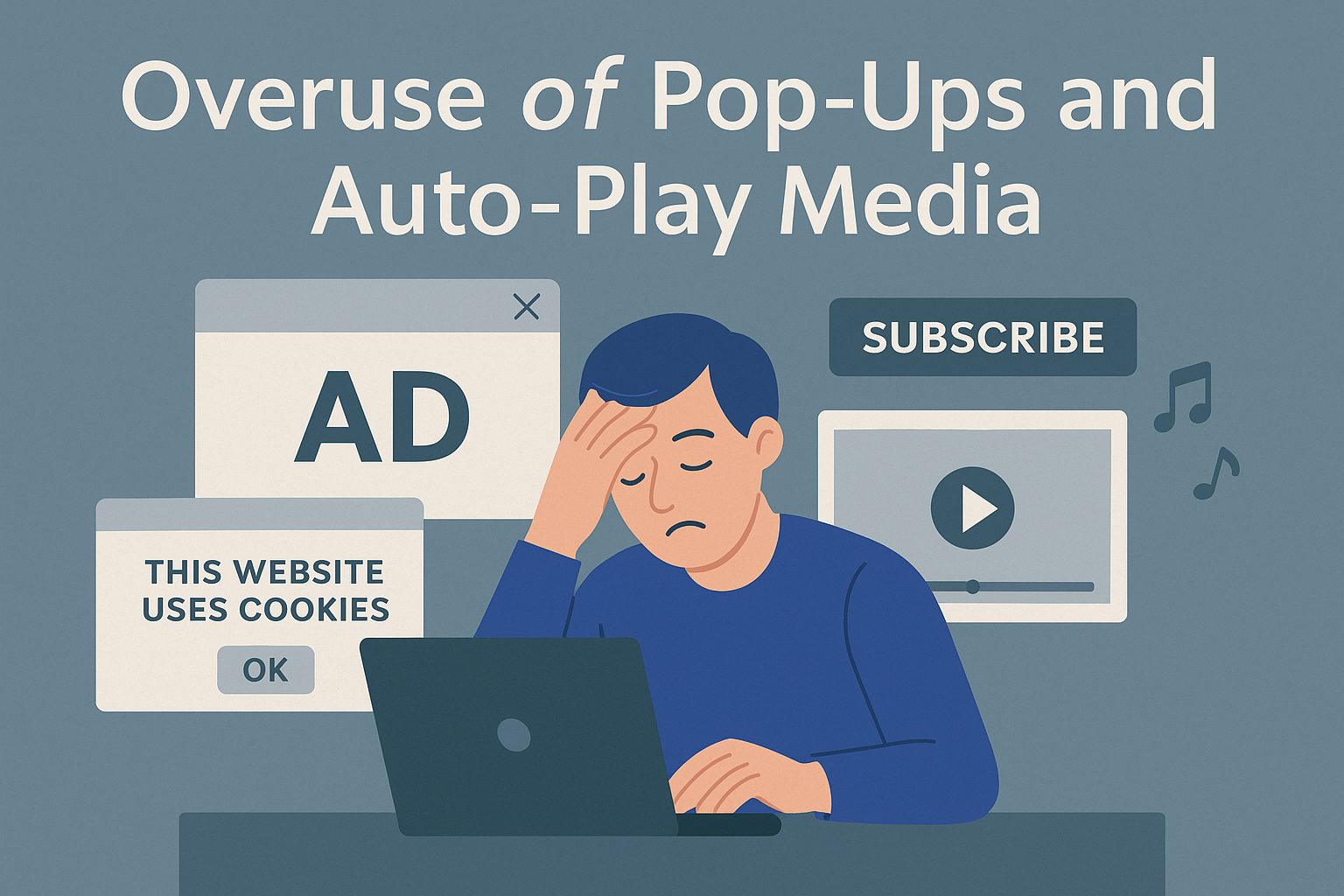
Nothing disrupts a user’s online experience more than excessive pop-ups and unexpected auto-play media. In 2025, users are more selective and privacy-conscious than ever before. When your website overwhelms them with interruptions, they bounce—fast. At Workmintz, we consistently see how these annoying web design features damage both user experience and brand perception.
One of the most frequent website pop-up mistakes is launching a pop-up the moment a visitor lands on the homepage. Without context or value, it’s perceived as spammy and intrusive. Similarly, auto-playing videos with sound can startle users, especially those browsing in quiet environments or at work, making them close the tab immediately.
These intrusive elements slow down your site, negatively impact mobile performance, and are often penalized by search engines. Google’s algorithm updates have emphasized user-centric design—meaning websites that frustrate users with aggressive media may lose visibility in search results.
That doesn’t mean you should avoid pop-ups altogether. When used strategically—such as exit intent pop-ups or time-delayed offers—they can improve conversions without ruining UX. At Workmintz, we recommend clear, respectful use of these tools, always giving the user control.
In short, your goal should be engagement, not interruption. Clean design, thoughtful timing, and subtle implementation are key.
5. Lack of Clear Call-to-Action (CTA)

One of the most overlooked elements in website design is the Call-to-Action (CTA). A missing CTA web design leaves visitors unsure about what to do next, which often results in lost conversions. Whether you want your users to make a purchase, subscribe to a newsletter, or request a demo, guiding them with a clear, well-placed CTA is essential.
At Workmintz, we’ve seen how impactful website CTA best practices can be when implemented properly. A good CTA is not just a button—it’s a directional sign in your website’s user journey. It should stand out visually, use compelling language, and be placed strategically throughout the site without being overwhelming.
Common mistakes include hiding the CTA below the fold, using weak or generic language like “Click Here,” or placing multiple conflicting CTAs on one page. These errors confuse users and reduce trust, ultimately lowering conversion rates.
Modern CTA best practices also account for accessibility, mobile responsiveness, and visual hierarchy. For example, color contrast should be strong enough for readability, and buttons must be tap-friendly on mobile devices.
In 2025, CTAs must be smart, not just flashy. At Workmintz, we ensure every website we craft has clearly defined, persuasive CTAs that align with user intent and business goals—turning visitors into loyal customers.
6. Not Designing for Accessibility
In today’s digital landscape, ignoring accessibility is no longer an option. An accessible web design ensures that users of all abilities—including those with visual, auditory, motor, or cognitive impairments—can navigate and interact with your website effectively. Failing to prioritize this not only alienates a significant portion of your audience but also puts your business at risk of legal consequences due to non-compliance with regulations like the ADA (Americans with Disabilities Act).
At Workmintz, we believe that inclusivity should be a foundational principle of every website project. From proper heading structures and alt text for images to keyboard navigation and screen reader compatibility, every detail matters in creating an ADA compliance website. Accessibility isn’t just ethical—it’s smart business.
Many brands make the mistake of treating accessibility as an afterthought or unnecessary expense. However, designing with accessibility in mind improves the overall user experience, enhances SEO performance, and builds brand trust. Accessible sites load better, reduce bounce rates, and rank higher on search engines—all contributing to stronger digital presence.
By embracing accessible web design, you’re not just following regulations—you’re showing your audience that you value every user’s experience. At Workmintz, we make sure your website is inclusive, compliant, and easy for everyone to use—because accessibility isn’t optional, it’s essential.
7. Inconsistent Branding and Fonts
One of the most overlooked mistakes in website design is the lack of brand consistency, especially in typography and visual identity. A professional website should reflect your brand’s voice, tone, and personality across every page, down to the smallest detail. At Workmintz, we frequently encounter businesses that struggle with maintaining a consistent visual language—resulting in lost trust, broken user experience, and poor recognition.
Using multiple fonts, clashing colors, or inconsistent logo placements are classic web design typography mistakes. These may seem minor but collectively damage your credibility. When a user visits your site and sees different heading styles or mismatched fonts on each page, it creates confusion and appears unprofessional. That’s why ensuring font hierarchy, consistent color palettes, and brand-aligned visuals is a top priority.
Consistency isn’t just visual—it extends to tone of voice in your copy, button styles, iconography, and even how your navigation behaves across devices. A brand consistency website fosters trust, encourages users to engage, and makes your business memorable.
Workmintz designs with precision, aligning every visual and typographic element with your brand identity. In 2025, digital audiences are more design-savvy than ever—don’t let inconsistency cost you conversions. Instead, let your website become a reflection of your cohesive and confident brand presence.
8. Forgetting SEO During the Design Phase
A common pitfall that many businesses fall into is forgetting to integrate SEO during the design phase of their website. At Workmintz, we’ve seen too many visually stunning sites struggle to gain traffic simply because they weren’t built with search engines in mind. This is one of the most costly SEO web design mistakes, especially in 2025 when competition online is fiercer than ever.
An SEO-friendly website isn’t something that’s tacked on after development—it must be baked into the structure from the start. This includes using clean, crawlable code, mobile optimization, fast-loading pages, optimized images, keyword-rich content, and logical site architecture. If your web design lacks these elements, your visibility in search engine rankings will suffer, regardless of how beautiful your site looks.
Ignoring these foundational SEO-friendly website tips can lead to poor indexing, low organic traffic, and high bounce rates. Elements like heading tags, meta descriptions, schema markup, and internal linking strategies should be thoughtfully implemented during the initial design—not treated as afterthoughts.
At Workmintz, we prioritize both design and discoverability. Our approach ensures your website is not only engaging for users but also optimized for Google’s algorithms. Don’t let your site remain invisible—design it to be found from day one.
9. Using Low-Quality Images and Graphics

One of the most overlooked yet impactful website design mistakes is using low-quality images and graphics. In 2025, visuals play a central role in shaping user perception and brand trust. At Workmintz, we often see brands unknowingly hurt their credibility by using pixelated, irrelevant, or outdated visuals. These website design image mistakes can instantly reduce engagement and increase bounce rates.
Images that are poorly optimized not only slow down your website but also reflect a lack of professionalism. This leads to a poor visual content web design experience, which negatively impacts both usability and conversions. Users are highly visual, and if your graphics do not resonate or align with your brand, they won’t stay long enough to take action.
Using high-resolution images that are web-optimized, relevant to your message, and consistently styled is key to a modern web design. Don’t overload your site with stock images that lack originality—instead, invest in custom visuals or high-quality assets that reflect your brand’s identity.
Workmintz helps businesses avoid this costly mistake by incorporating visually rich content that enhances the user experience without compromising site performance. Remember, quality visuals not only elevate design but also communicate trust and attention to detail.
10. Neglecting Website Security and Trust Signals
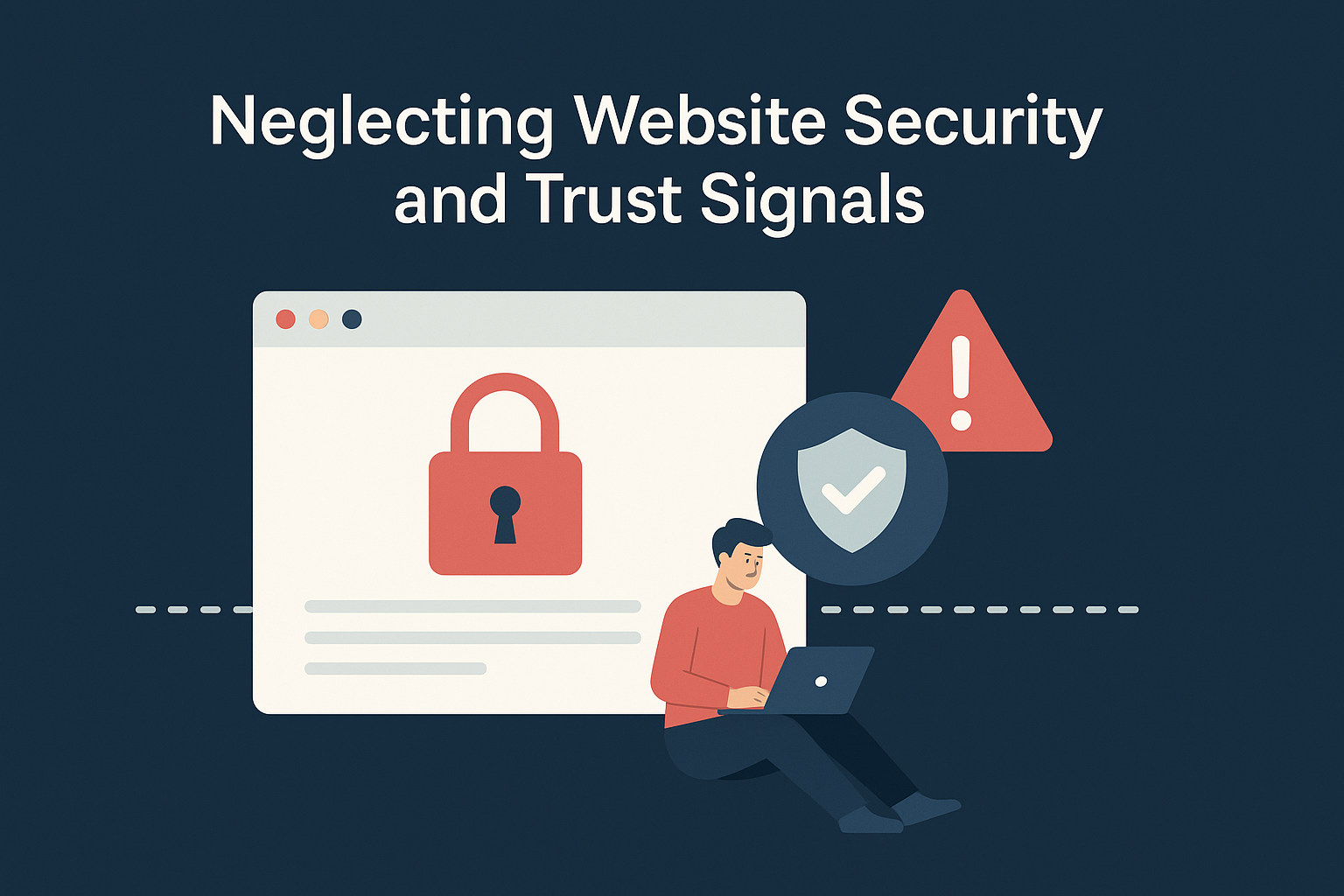
In the digital landscape of 2025, website security and trust are no longer optional—they’re expected. One of the most critical yet common mistakes in web design is neglecting security protocols and trust-building elements. At Workmintz, we’ve seen countless businesses suffer from poor engagement and high bounce rates simply because users didn’t feel safe navigating their site.
Missing SSL certificates, lack of privacy policies, outdated software, and broken links are just a few examples of security oversights that instantly reduce credibility. Secure website
design practices are essential not just for user confidence but also for SEO, as search engines like Google prioritize secure, trustworthy websites.
Beyond security, website trust elements—such as testimonials, reviews, client logos, trust badges, and visible contact details—build user confidence and increase conversion rates. Visitors need reassurance that they’re dealing with a legitimate brand before they make a purchase or submit their data.
At Workmintz, we emphasize integrating strong encryption, GDPR compliance, real-time security monitoring, and strategic placement of trust elements in every design project. A website that feels secure not only protects your users but also reinforces your brand’s integrity and professionalism.
Avoid this fatal mistake by prioritizing security and trust as core components of your design strategy from day one.
Conclusion: Build Smarter, Not Just Prettier
As we wrap up this detailed guide on the top mistakes to avoid in website design (2025 edition), it’s important to understand that good design isn’t just about aesthetics—it’s about functionality, trust, accessibility, and results. At Workmintz, we believe in crafting digital experiences that align with responsive web design best practices, load efficiently, and guide users smoothly toward conversion.
Every mistake mentioned in this guide—from website speed optimization mistakes to missing CTA web design—can silently harm your business, whether it’s through lost leads, higher bounce rates, or lower search engine rankings. But the good news? Every one of these errors is completely avoidable with the right knowledge, strategy, and design partner.
By focusing on SEO-friendly website tips, user-first navigation, visual clarity, brand consistency, and secure website design practices, you build more than just a website—you build trust, visibility, and growth. Users notice the difference when a website is thoughtfully planned and properly executed.
If you’re ready to elevate your digital presence, avoid these pitfalls, and design with confidence, Workmintz is here to help. Our team blends creativity with technical expertise to deliver high-converting, secure, and user-friendly websites tailored for your goals in 2025 and beyond.
Frequently Asked Questions
In 2025, responsive web design is not just a best practice—it’s essential. With users accessing websites on various devices like smartphones, tablets, and foldables, a responsive layout ensures a seamless user experience across screen sizes. Ignoring responsive web design best practices can lead to distorted layouts, higher bounce rates, and lost conversions. Google’s algorithm now prioritizes mobile-first indexing, so a mobile-friendly site improves both SEO and usability. Workmintz emphasizes implementing fluid grids, flexible images, and media queries to adapt designs efficiently. Not having a responsive layout means you’re alienating over half your visitors. That’s not just bad UX—it’s bad business. Investing in responsive design improves engagement, reduces frustration, and increases dwell time, ultimately boosting your brand’s credibility and performance online.
One of the most damaging website speed optimization mistakes is not compressing images, which can drastically slow down your page load time. In 2025, users expect websites to load in under 3 seconds—any longer, and you risk losing visitors. Other common errors include unminified CSS/JavaScript files, excessive use of third-party plugins, not leveraging browser caching, and failing to use a content delivery network (CDN). At Workmintz, we focus on optimizing each element of your site to ensure lightning-fast performance. A slow-loading site hurts your user experience and SEO rankings, as Google factors site speed into its algorithm. Always test your speed using tools like Google PageSpeed Insights and implement technical best practices to reduce load time. Fast websites keep users engaged longer and improve conversion rates significantly.
User experience design errors can severely impact a website’s effectiveness by confusing, frustrating, or driving away users. Examples include cluttered layouts, unclear navigation, inconsistent fonts, and poor mobile responsiveness. These bad UX examples reduce time-on-site, increase bounce rates, and ultimately hurt conversion rates. When users can’t intuitively navigate your website or find what they’re looking for quickly, they are likely to leave and never return. At Workmintz, we emphasize usability testing and data-driven UX improvements to fix these common design flaws. A well-structured site with logical flows, consistent branding, and responsive elements builds trust and encourages user engagement. Avoiding user experience design errors not only enhances customer satisfaction but also aligns with Google’s EEAT and Core Web Vitals standards, which favor well-designed, user-friendly sites. Improving UX is no longer optional—it’s a competitive necessity in 2025.
Website pop-up mistakes and auto-play media are often listed among the most annoying web design features. While pop-ups can be useful for lead generation, poor execution—like frequent interruptions, hard-to-close windows, or irrelevant messaging—frustrates users and increases bounce rates. Similarly, auto-play videos with sound can disrupt user focus, especially on mobile devices or during work hours. These design missteps damage the user experience and send negative signals to search engines. At Workmintz, we follow best practices by implementing timed, exit-intent, or scroll-triggered pop-ups and disabling auto-play audio. Striking the right balance between engagement and user comfort is crucial. Google’s EEAT guidelines and page experience metrics favor sites that provide value without annoying users. Avoiding these mistakes ensures your website feels professional, respectful, and user-centric—qualities that directly impact SEO, conversions, and trust.
Brand consistency ensures that your visual identity, tone, and messaging are uniform across your website and other digital platforms. Inconsistent fonts, mismatched color schemes, or conflicting messaging confuse users and diminish trust. At Workmintz, we emphasize brand consistency in web design to enhance recognition and credibility. When visitors see the same typography, logo placement, and voice across every page, they develop a stronger connection to your brand.
Not following branding best practices can lead to a disjointed user experience and hurt conversions. Using consistent design elements also supports SEO by creating structured content and predictable layouts, which search engines favor. Whether it’s applying your brand palette properly or maintaining cohesive typography, consistency reinforces professionalism and trustworthiness—essential components of modern website success.
Neglecting accessible web design and failing to meet ADA compliance standards can have serious consequences—legally, ethically, and commercially. Websites that don’t accommodate users with disabilities (such as screen reader support, keyboard navigation, or color contrast adjustments) alienate a significant portion of the audience and violate the principles of inclusive design. This not only affects user experience but can also result in lawsuits or legal complaints, particularly in the U.S. under the Americans with Disabilities Act (ADA).
From an SEO standpoint, accessible web design improves crawlability and content clarity, which align with Google’s EEAT (Experience, Expertise, Authoritativeness, Trustworthiness) standards. At Workmintz, we prioritize ADA compliance in every website we design—implementing features like alt text for images, proper heading structure, and accessible navigation. Ignoring these elements doesn’t just hurt your brand reputation; it limits your reach and can hurt your rankings. Prioritizing accessibility isn’t just a best practice—it’s a business necessity in 2025.
Low-quality images or poorly optimized graphics can severely affect both aesthetics and functionality. Common website design image mistakes include using pixelated visuals, irrelevant stock photos, or not compressing files for web. These mistakes slow down loading speed—negatively impacting SEO and user engagement. At Workmintz, we ensure every image enhances the user journey, aligns with the brand, and loads quickly across devices.
High-resolution visuals that are relevant and optimized for web not only improve user experience but also reinforce trust. Poor visual content web design reflects a lack of attention to detail and can turn away visitors instantly. Investing in quality graphics and consistent branding across visuals helps elevate the perceived value of your business and boosts performance metrics.
SEO isn’t just about keywords—it starts from the ground up with web design. Ignoring SEO during design leads to structural flaws like slow pages, improper heading tags, and poor content layout. These are critical SEO web design mistakes. At Workmintz, we integrate SEO-friendly website tips right into the wireframing stage.
From responsive layouts to fast loading times and metadata optimization, every element is crafted to boost search visibility. Without SEO in the design phase, you’ll likely face low traffic, poor rankings, and missed business opportunities. Google prioritizes well-structured, fast, and user-intent-driven websites. So, an SEO-integrated design not only improves discoverability but also helps users navigate easily and engage with your content.
While pop-ups can capture leads, overusing them—or adding annoying web design features like auto-play videos—creates a negative first impression. Intrusive pop-ups interrupt the user’s journey, while auto-play media can frustrate visitors, especially on mobile or with limited bandwidth. At Workmintz, we believe in balance: use pop-ups strategically and always give users control.
Well-timed, relevant, and non-disruptive pop-ups convert better and maintain UX. Avoiding website pop-up mistakes like delayed close buttons or irrelevant offers is crucial. Annoying features lead to higher bounce rates, reduced conversions, and lower SEO rankings. Respecting the user’s browsing experience by using subtle, helpful interactions keeps them engaged and builds trust.
In 2025, building trust online goes beyond good design. Website trust elements like secure HTTPS, privacy policies, SSL certificates, customer reviews, and transparent contact details are essential. Security features not only protect users but also reassure them about your professionalism.
Search engines and users alike prioritize secure website design practices. At Workmintz, we incorporate trust signals throughout every project—like SSL, clear navigation, visible contact info, and third-party trust badges. These factors improve conversion rates and contribute to better rankings under Google’s EEAT guidelines. A trustworthy site fosters user confidence and positions your brand as reliable and authoritative in your niche.

